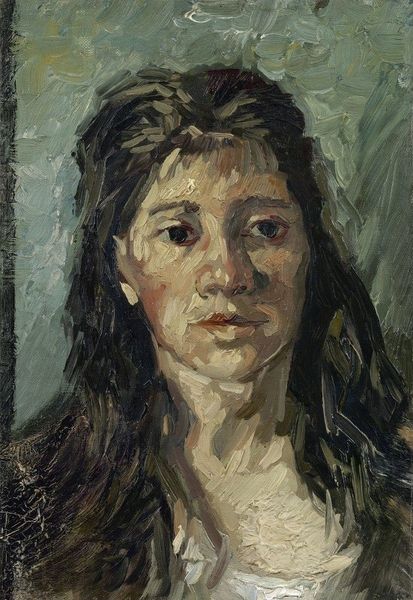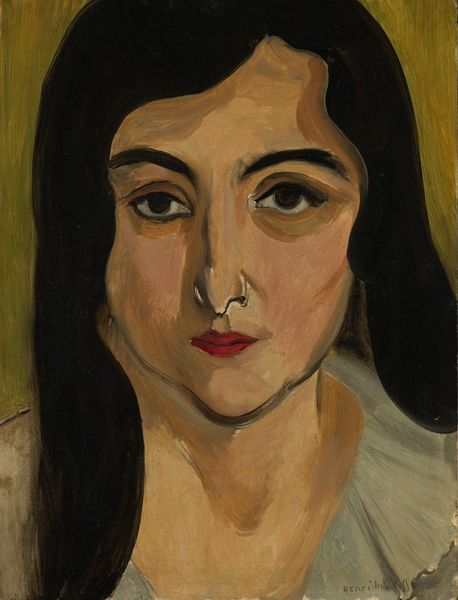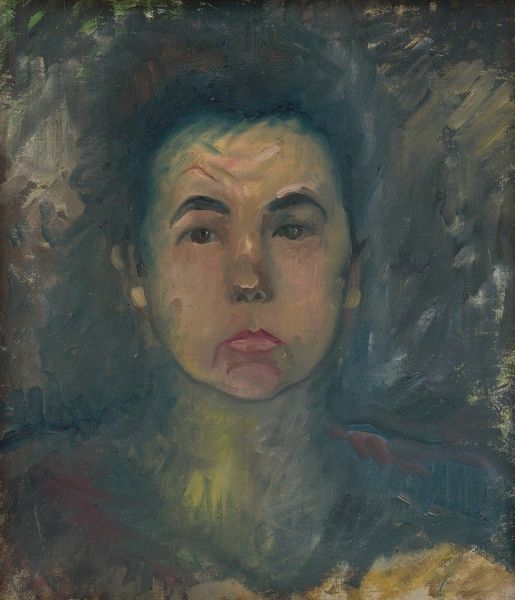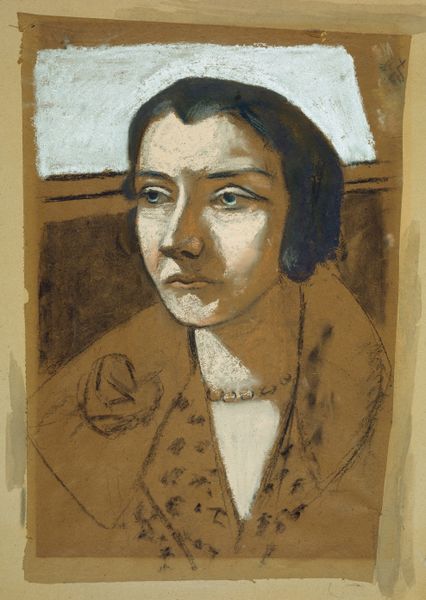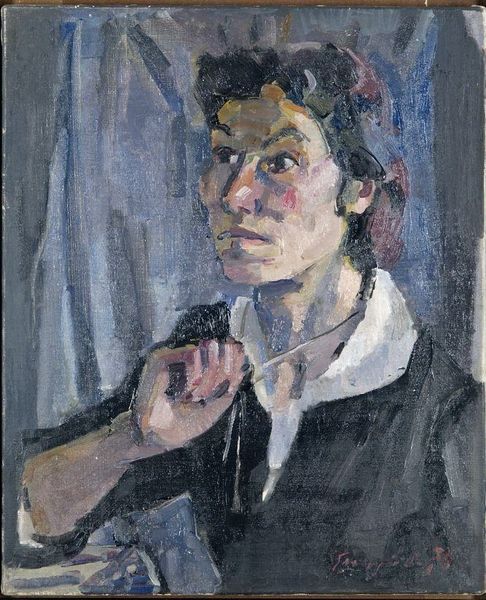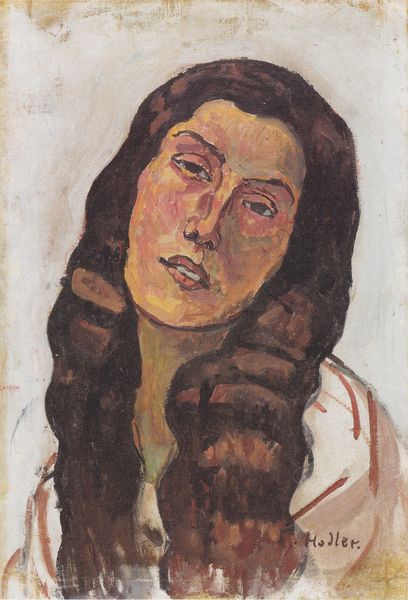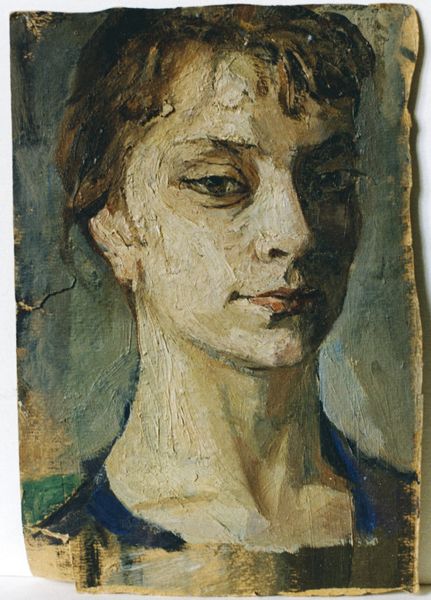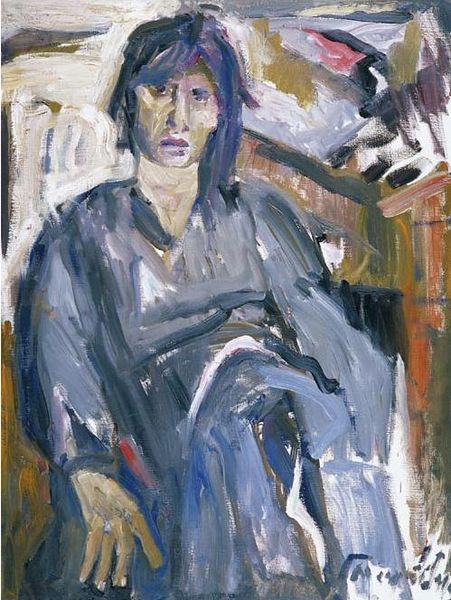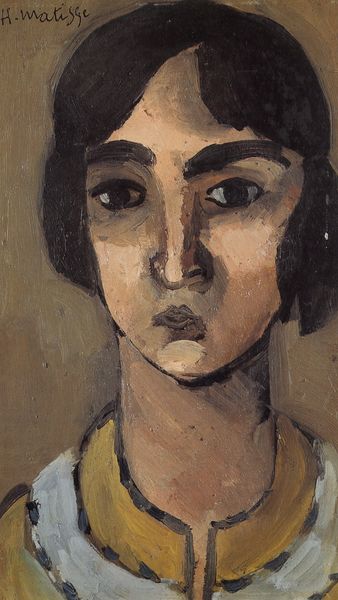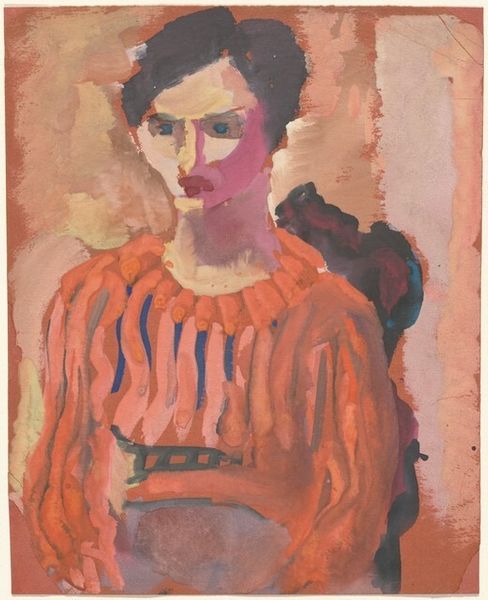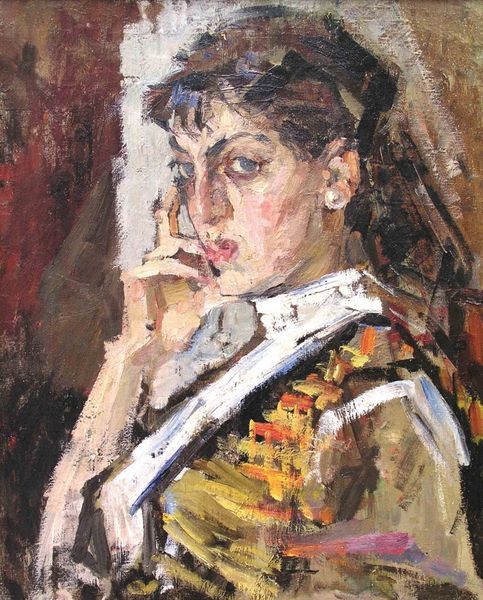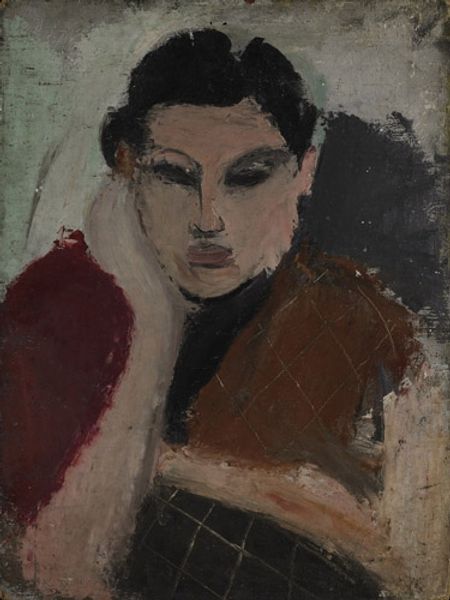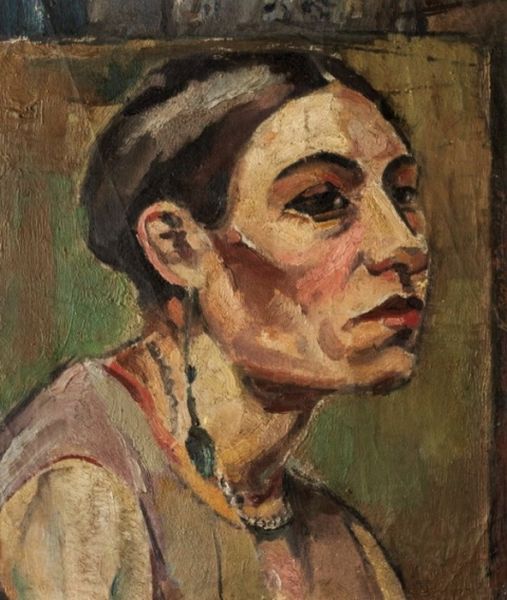
painting, oil-paint
#
portrait
#
painting
#
oil-paint
#
oil painting
#
portrait art
#
realism
Copyright: George Mavroides,Fair Use
Curator: Looking at George Mavroides's oil on canvas portrait, entitled “Mary,” from 1981. I find myself drawn to the sheer physicality of the paint; the textures feel almost sculpted, thick in places. Editor: It's a very direct image. What strikes me immediately is the subject's gaze - or perhaps I should say, the evasion of it. She seems turned inward, lost in thought. I wonder what context shaped this moment of capture? Curator: Well, given that it's an oil painting from the early '80s, I'm interested in the actual labor involved. Look at the brushwork, the density, the way the paint almost resists being blended. Each stroke feels deliberate, adding to a layered materiality. Editor: And who was Mary? Her downcast eyes and the somber palette suggest a sense of melancholy. We see a woman, painted by a man, within what socio-political dynamic? This deserves a thorough examination beyond its face value as art. Curator: That's true. Considering the prevailing art trends of the time, it's perhaps a reaction against the slickness of mass production, a return to more traditional methods and craftsmanship. The oil paints themselves would have been consciously chosen and mixed, affecting the look and feel of the painting itself. Editor: I wonder about her expression as well. During this era, how did societal norms impose standards of beauty on women? Is her subdued gaze defiance, compliance, or something in between? "Mary" as a symbol embodies numerous tensions. Curator: Absolutely. By attending to such visible details, Mavroides displays his skills, asserting value through demonstrable material engagement, and maybe pushing back on prevailing ideas about what art could or should be through the deliberate process. Editor: Indeed, art is rarely created in a vacuum. Seeing “Mary” forces me to confront larger discussions regarding agency, representation, and the enduring legacies of looking and being seen within power structures. Curator: I hadn't thought about those particular angles, but you’ve really provided fresh context and added additional depth, making me appreciate even more Mavroides’ thoughtful, painstaking craftsmanship with a fuller awareness. Editor: Exactly. And looking closer at "Mary," through this lens—I walk away sensing the importance of art as an archive that documents more than intended through material traces.
Comments
No comments
Be the first to comment and join the conversation on the ultimate creative platform.
